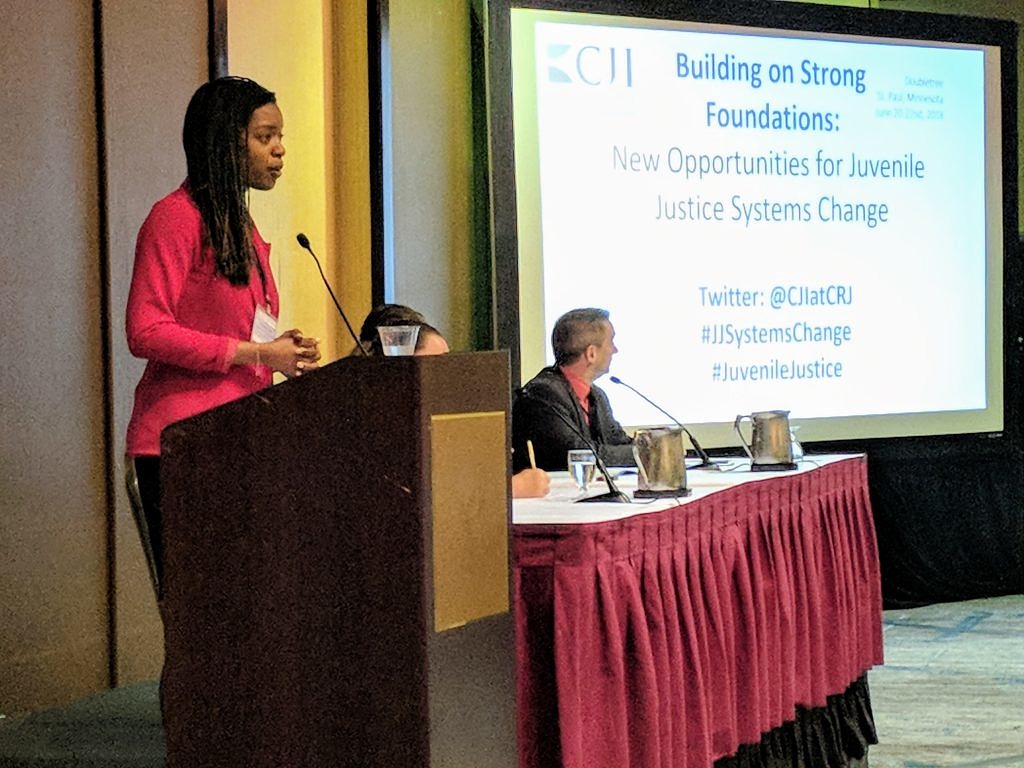
ST. PAUL – Over the last six years, states across the country have implemented data-driven, evidence-based reforms that are sending fewer juveniles to secure facilities and working to reduce recidivism among young people involved in the juvenile justice system.
Now those states are drawing on their experience to help others do the same.
Stakeholders who helped develop and implement those reforms in Georgia, Hawaii, Kansas, Kentucky, South Dakota, Tennessee, and Utah explained how they did it and how other states can follow their lead during a two-day conference hosted by the Crime and Justice Institute (CJI), with support from The Pew Charitable Trusts, in St. Paul in June.
Attendees at the conference included representatives from nine states interested in pursuing juvenile justice reforms of their own – Alabama, Arkansas, Iowa, Indiana, Minnesota, Nebraska, Tennessee, Washington, and Wisconsin.
The two-phase process begins with analyzing data, crafting policy recommendations, and passing reform legislation. State agencies then begin implementing those policies. While each state is unique, the goal of the reforms in each state is similar – protect public safety, hold youth accountable for their actions, and reduce taxpayer costs. Working in partnership, CJI and Pew have provided technical assistance to juvenile justice stakeholders in nine states, building strong relationships with partners from coast to coast.
“The reason this process and the policies that result are sustainable is because the process brings in so many perspectives,” said Len Engel, CJI’s director of policy and campaigns. “It is driven by data – the state’s data – and supported by sound research.”
A diverse group of state legislators, juvenile corrections officials, judges, educators, faith leaders, advocacy groups, and others broke down the complex process during panel discussions focusing on the evolution of legislative reforms, the important links between the juvenile justice system and schools, how to incorporate perspectives from across the political spectrum, and more.
One common thread among the states was the high rate of juveniles placed in custody for low-level offenses, which didn’t lead to public safety benefits and ate up resources. Before South Dakota’s reforms, for example, seven out of 10 youths coming into state custody were charged with low-level offenses, said Kristi Bunkers, the director of juvenile services for the state’s Department of Corrections.
“We were sending kids away because they had needs, not because they were public safety threats,” Bunkers said.
Since passing a reform package in 2015, South Dakota has reduced new commitments to juvenile facilities by half, cut down the number of youth under the jurisdiction of the Department of Corrections by more than a third, and was able to close the only state-run secure youth facility.
Reducing out-of-home-placements by expanding diversion programs that also hold juveniles accountable was also a goal in Kentucky’s reforms.
“We wanted to give kids more chances to divert and to keep the recidivism rate low,” said state Sen. Whitney Westerfield, a leader in Kentucky’s juvenile justice reform process. “The data doesn’t back up locking them up.”
For each state, developing and implementing juvenile justice reforms is a long and ongoing process requiring months of careful data analysis, gathering input, and rolling out new policies. But for speakers at the conference, improving lives for young people has been well worth the effort.
“We pushed ahead because it was the right thing to do,” said Susan Burke, director of the Division of Juvenile Justice Services in Utah’s Department of Human Services. “These kids need our help, and we are the ones who can change things for them.”